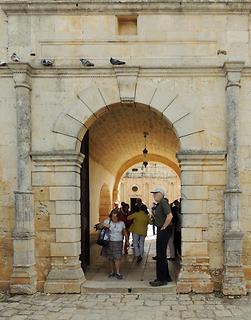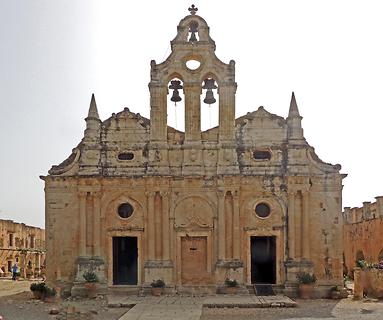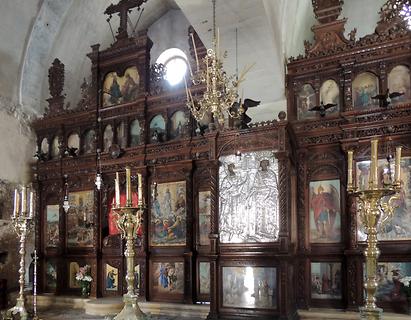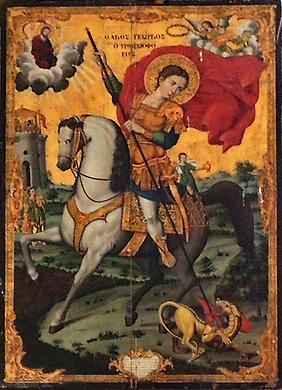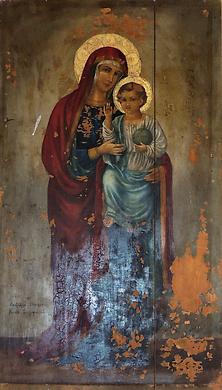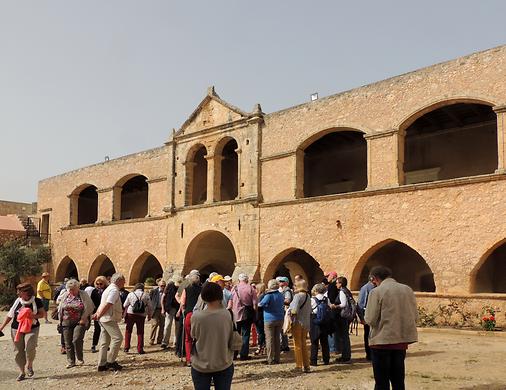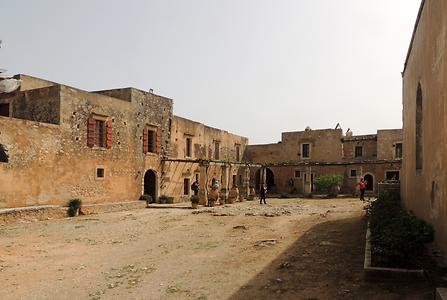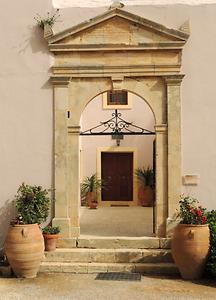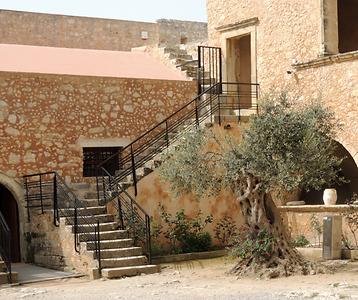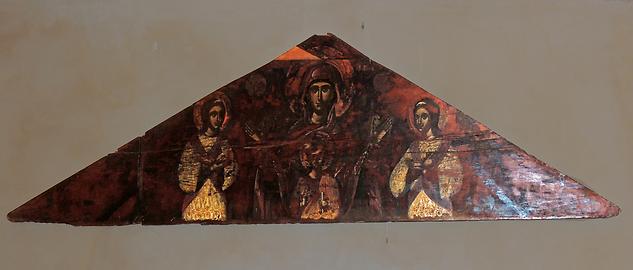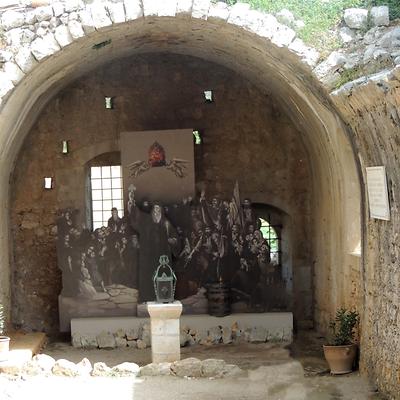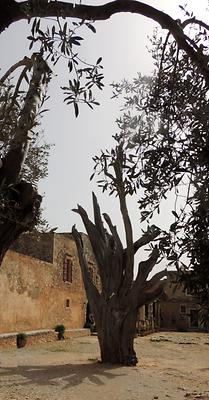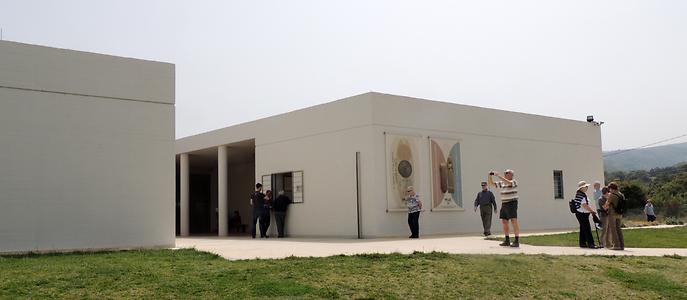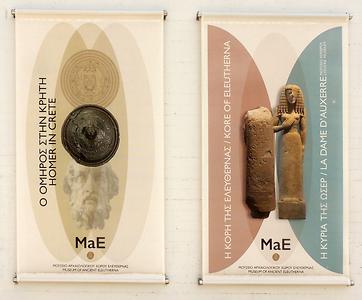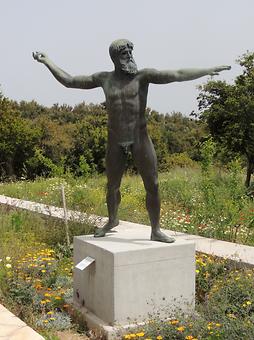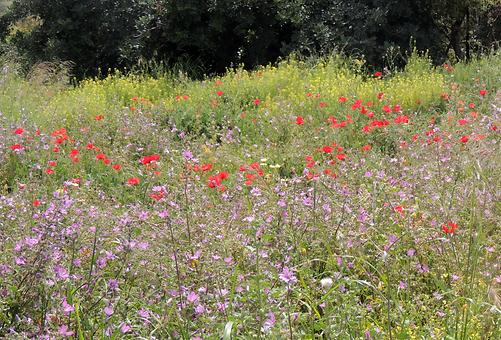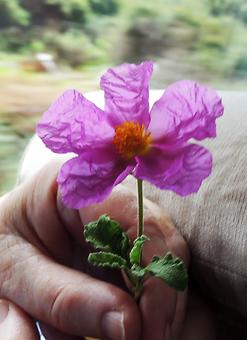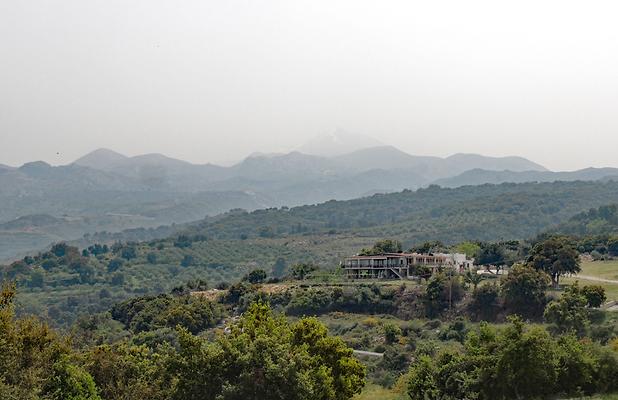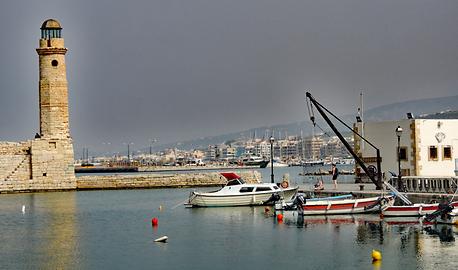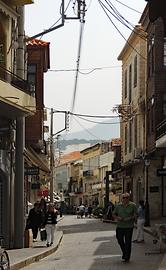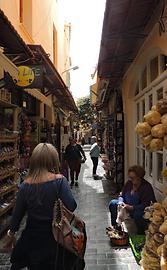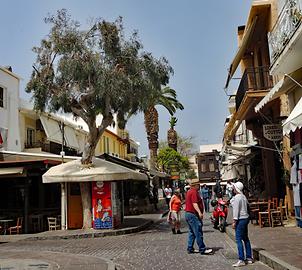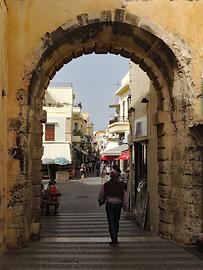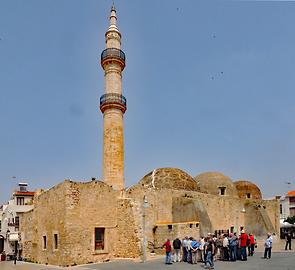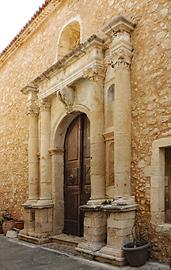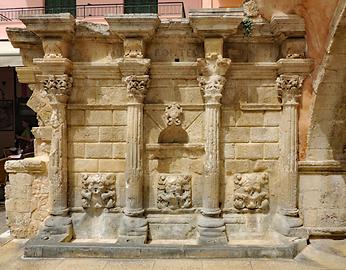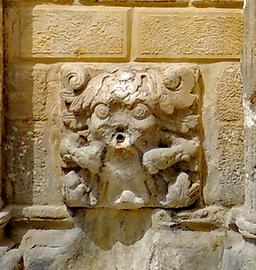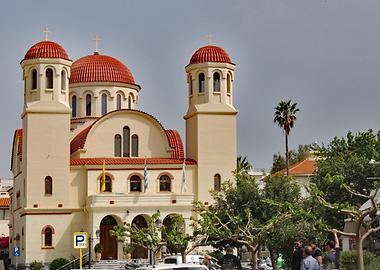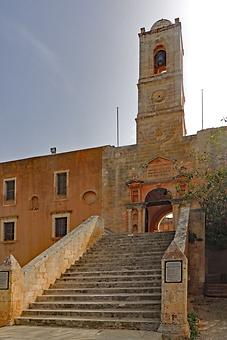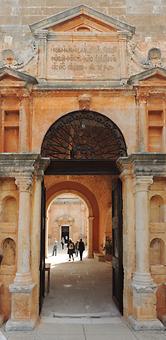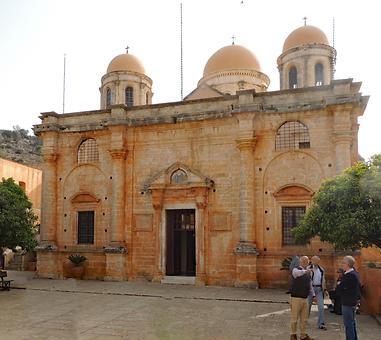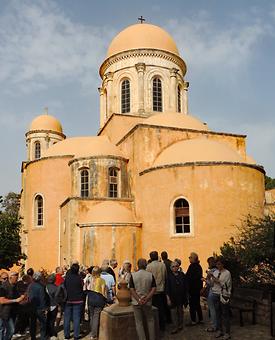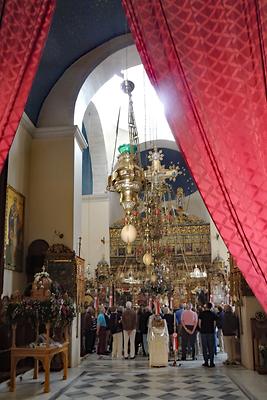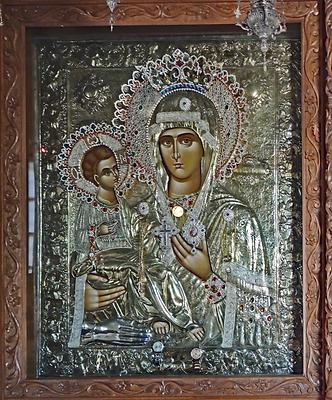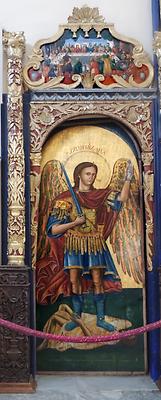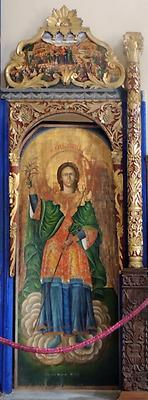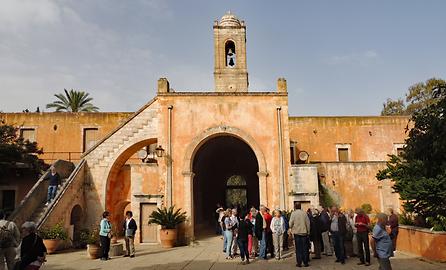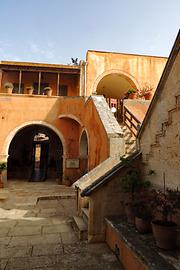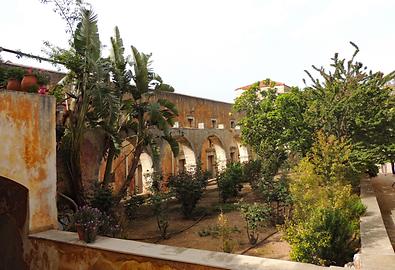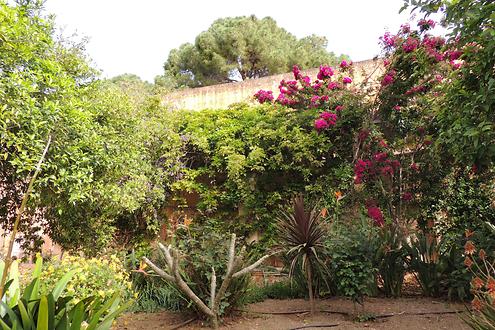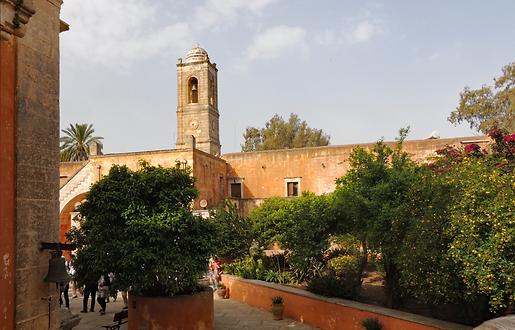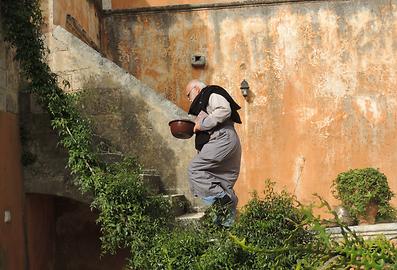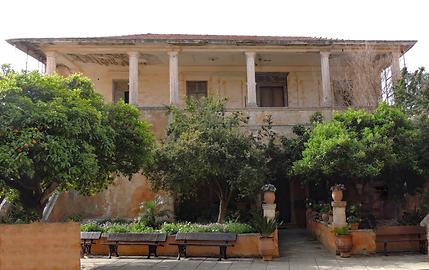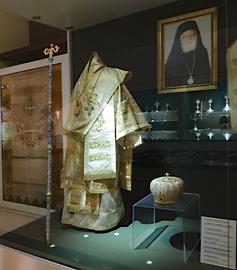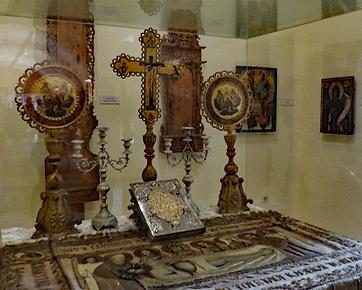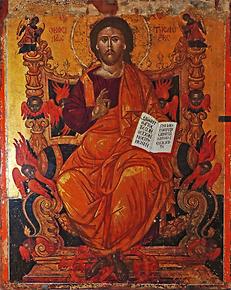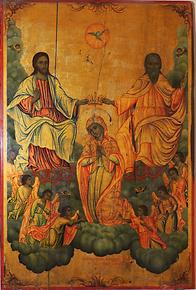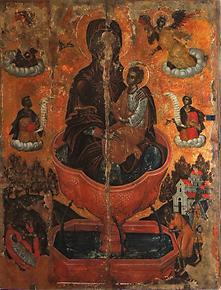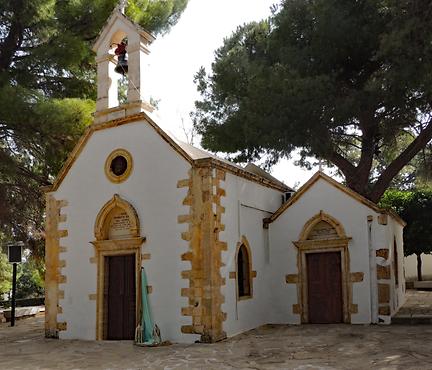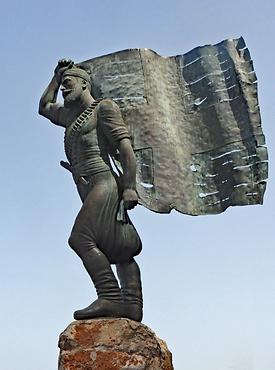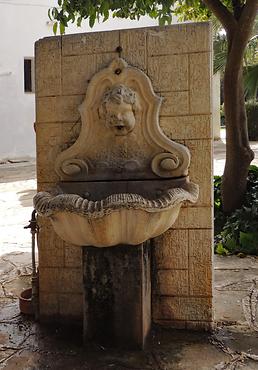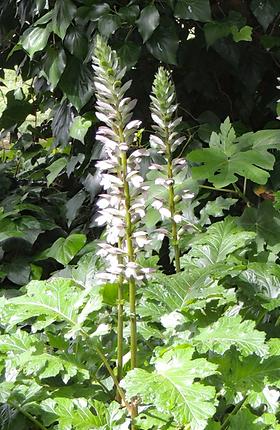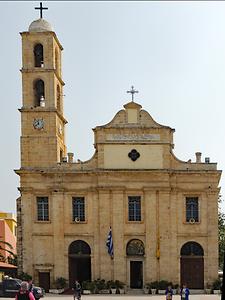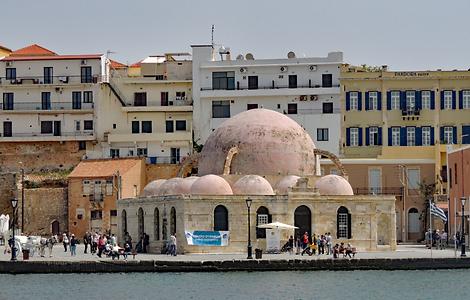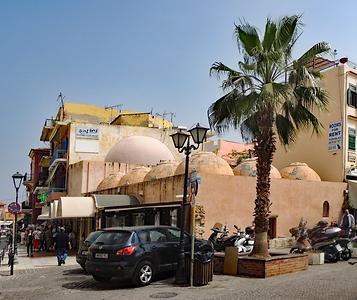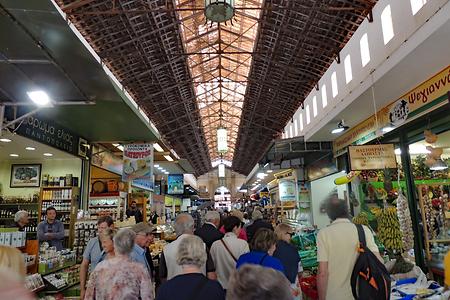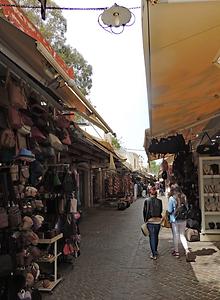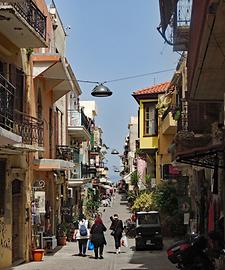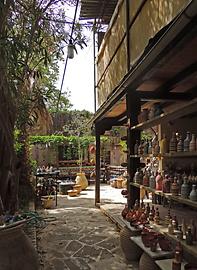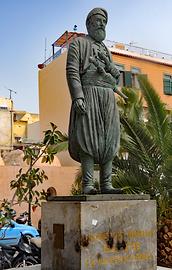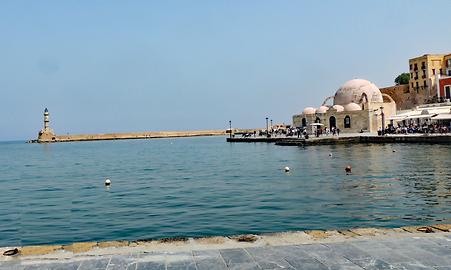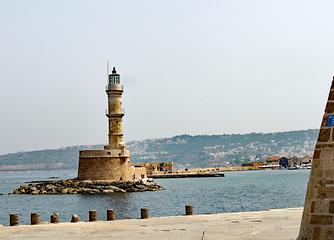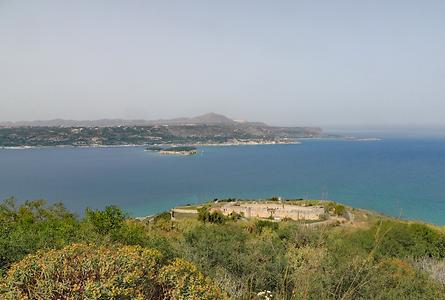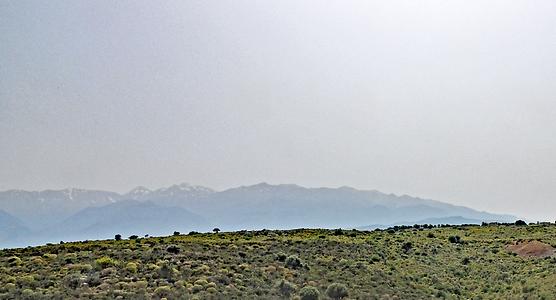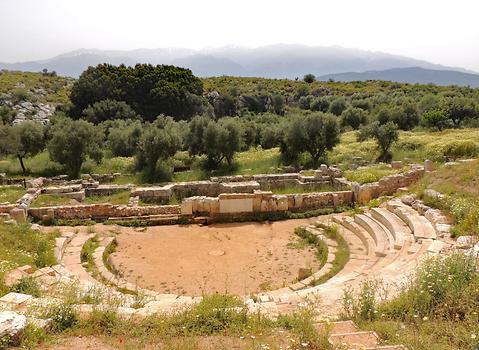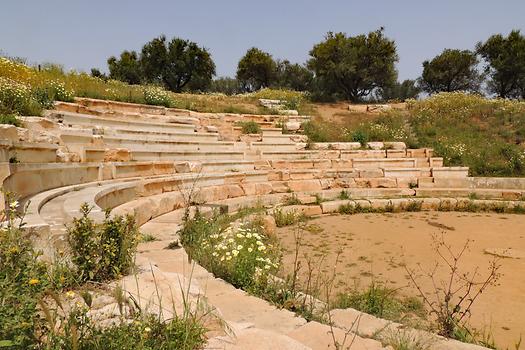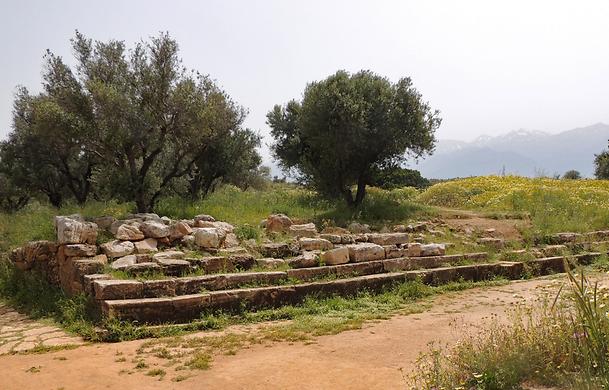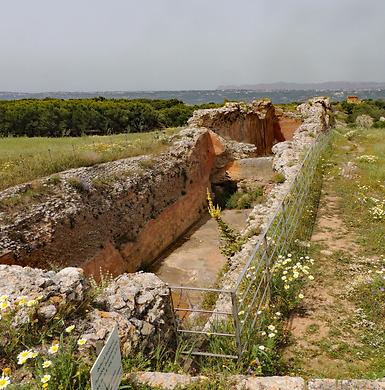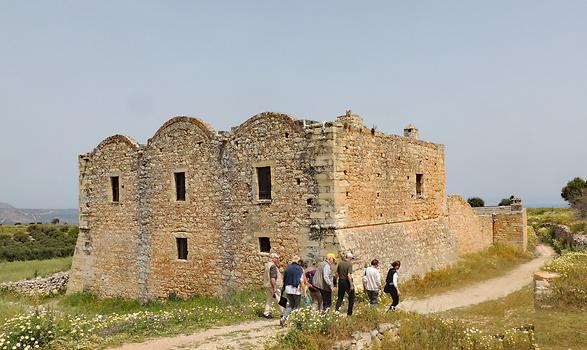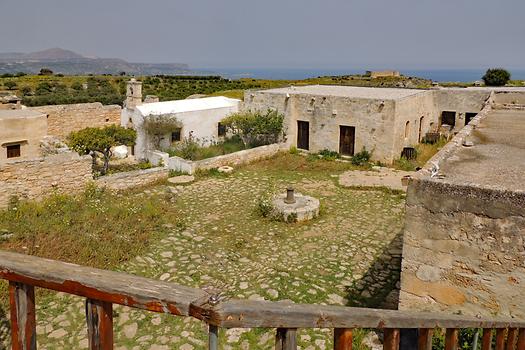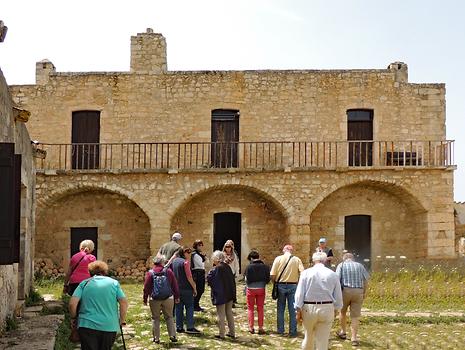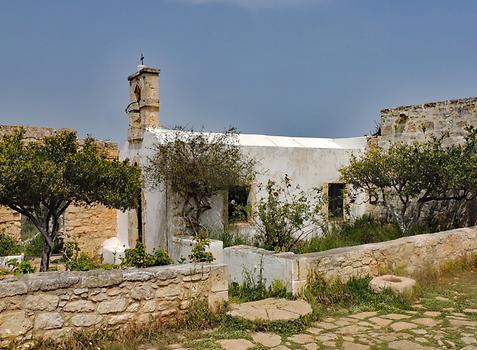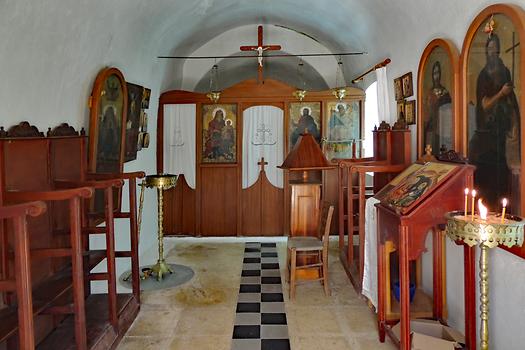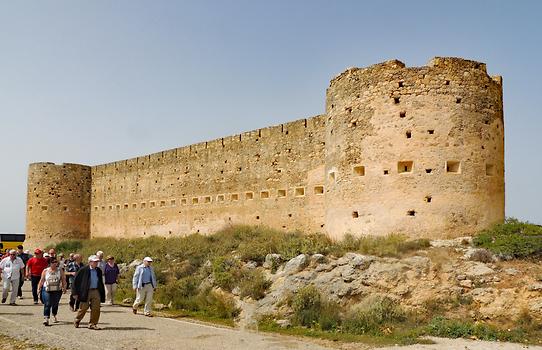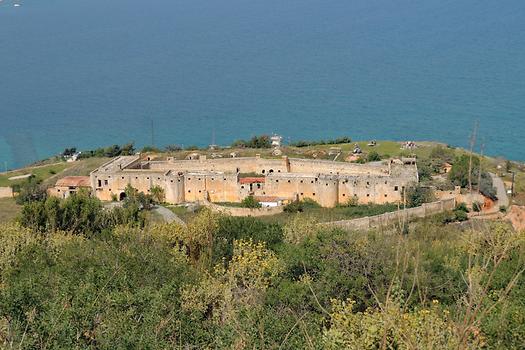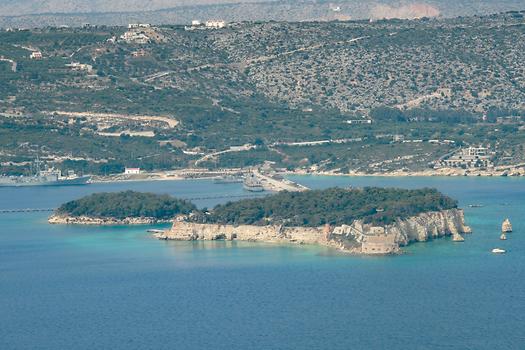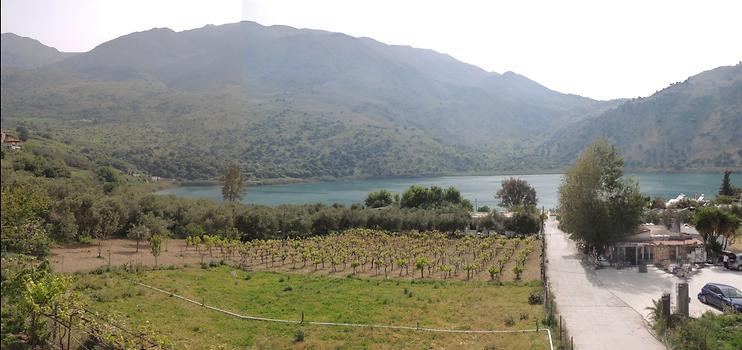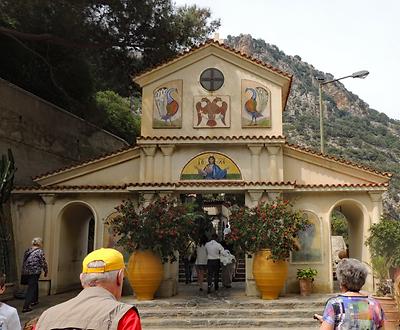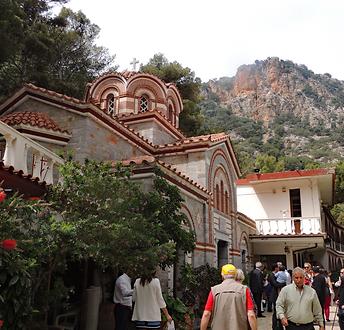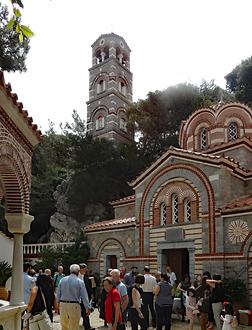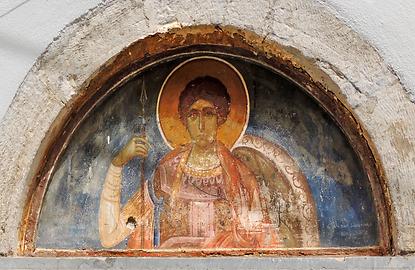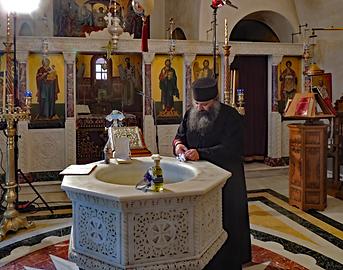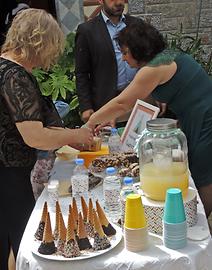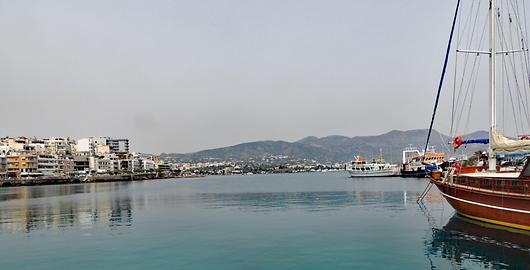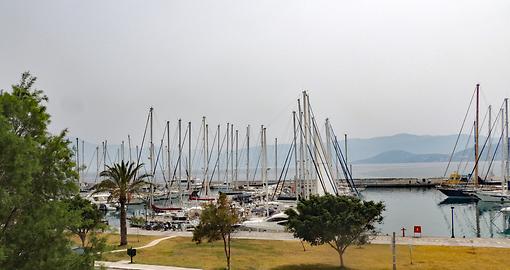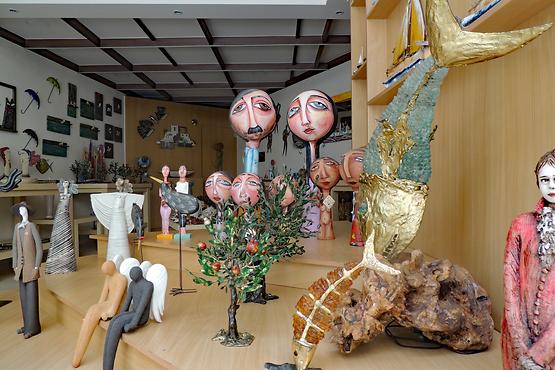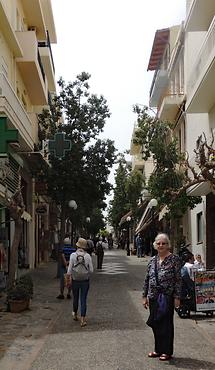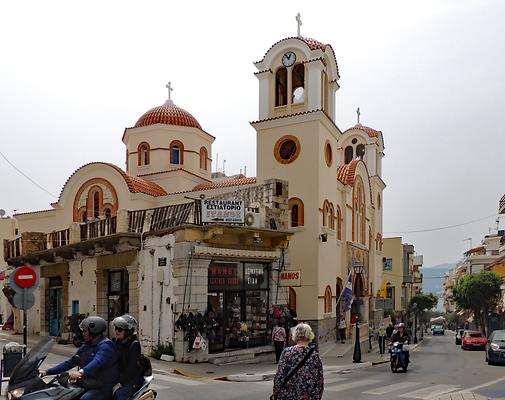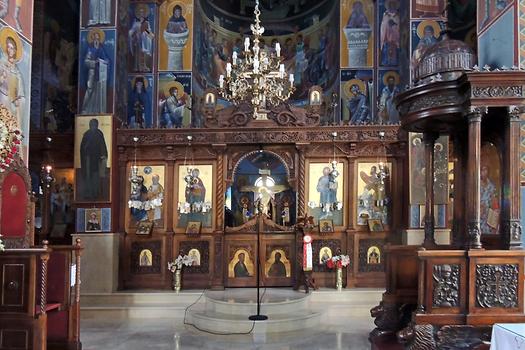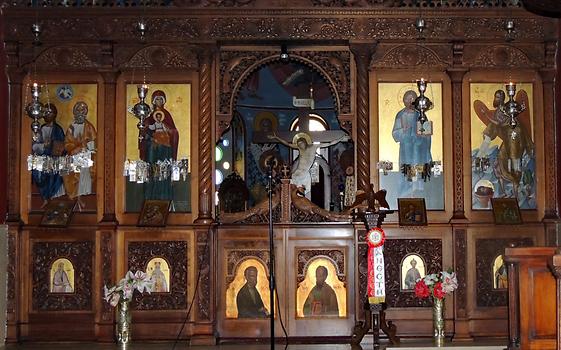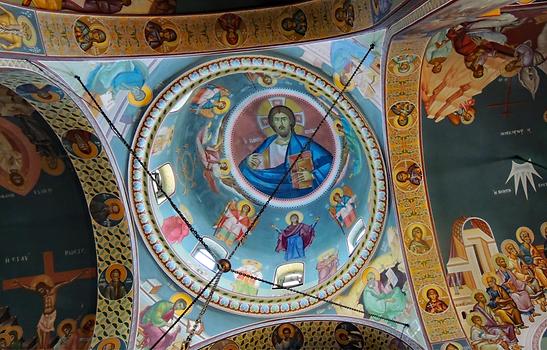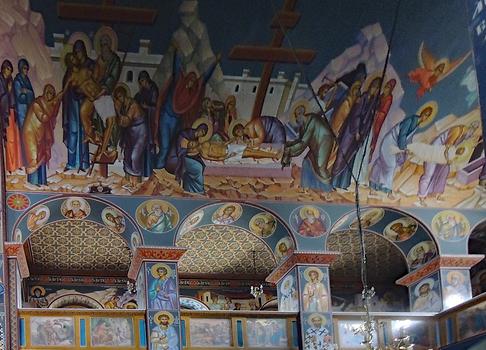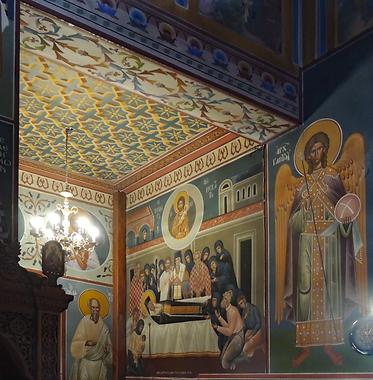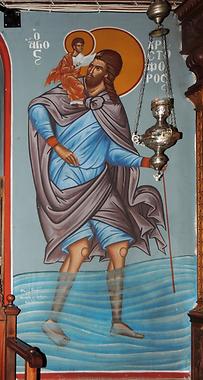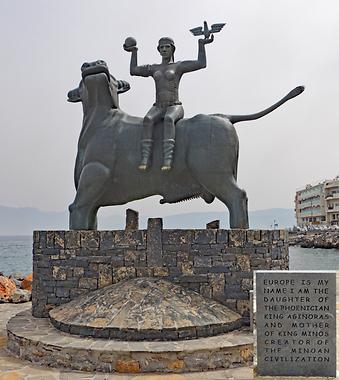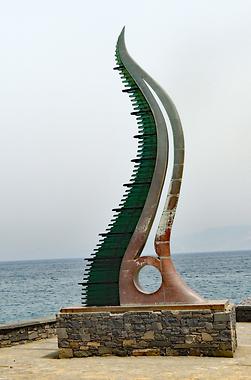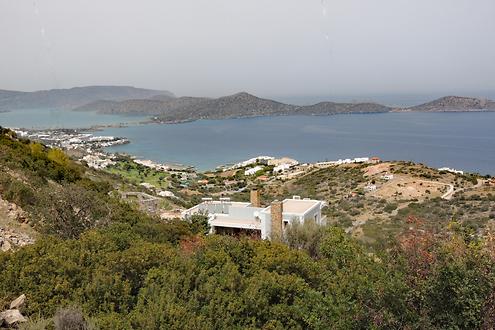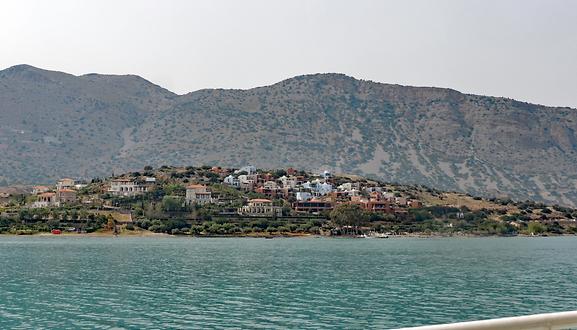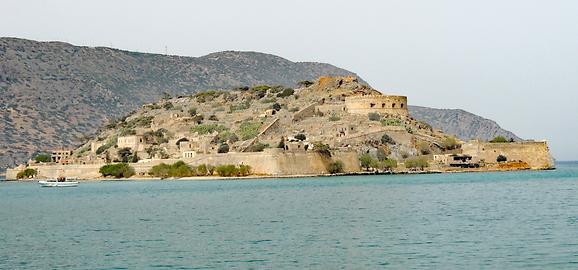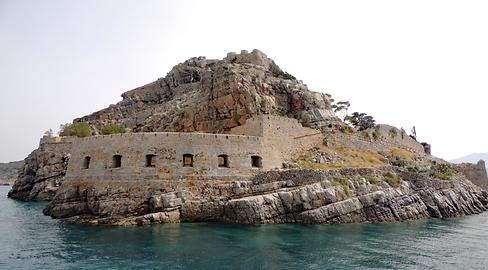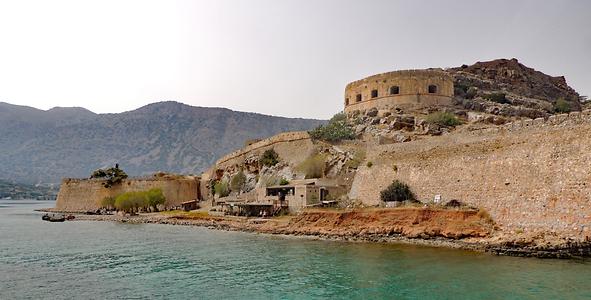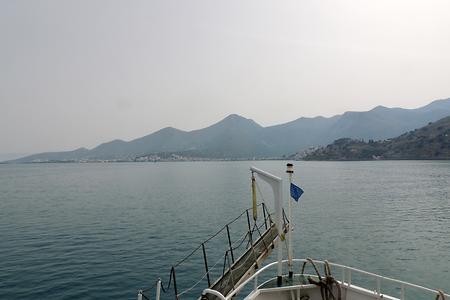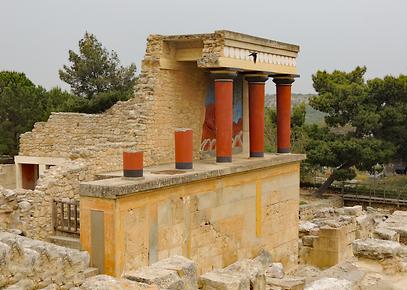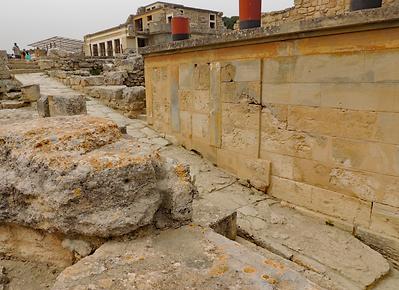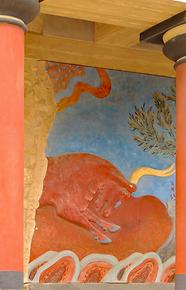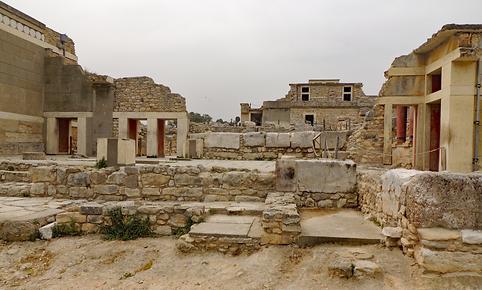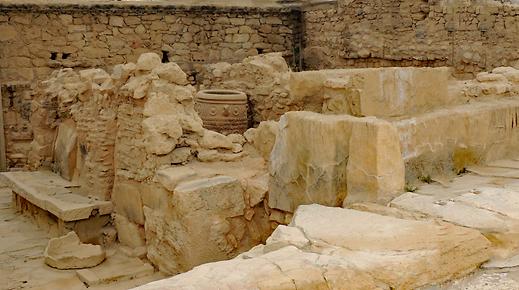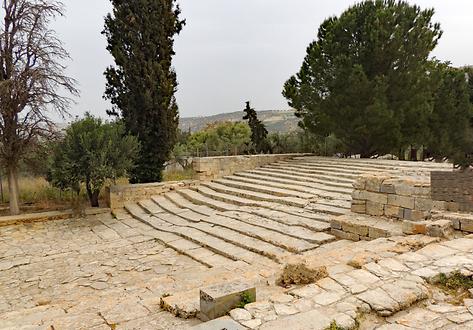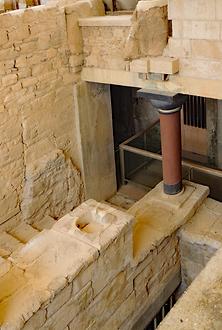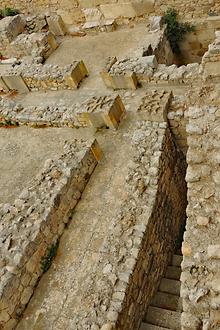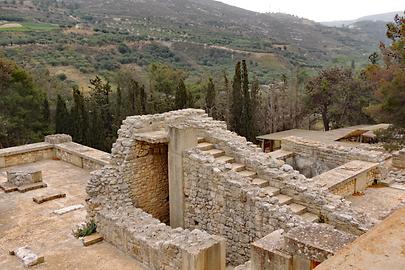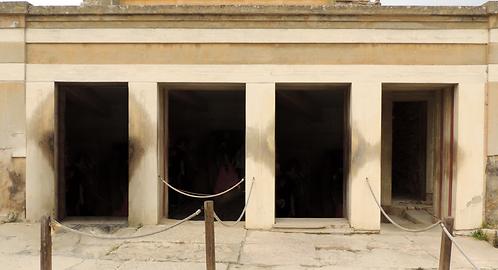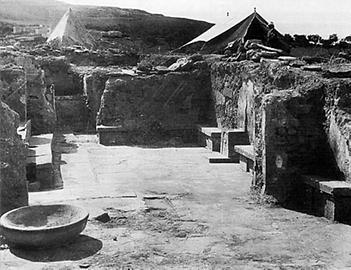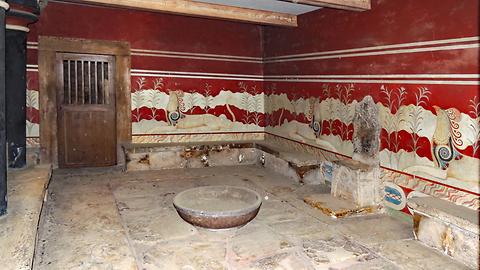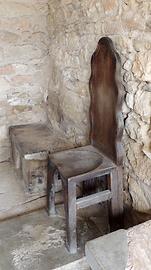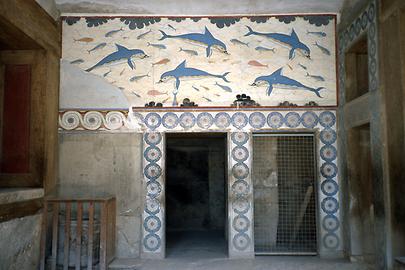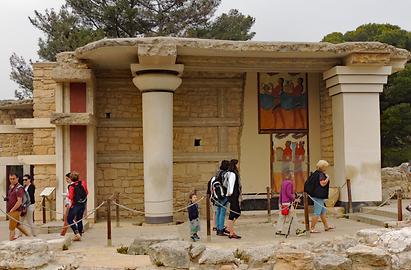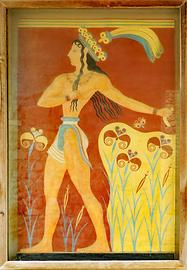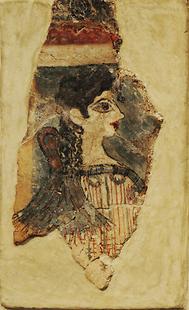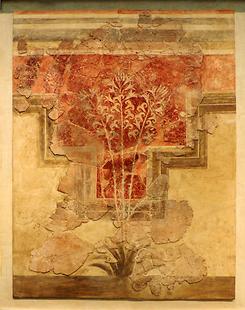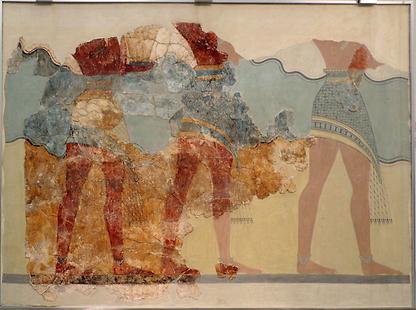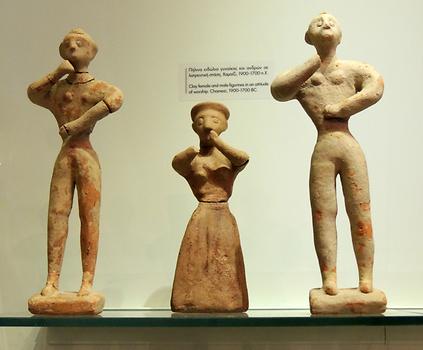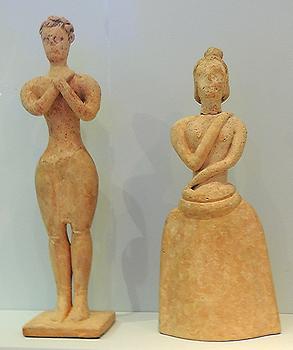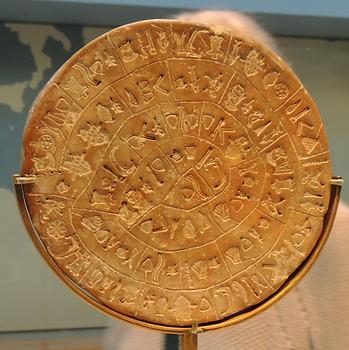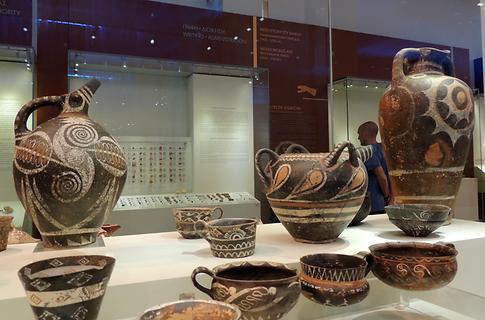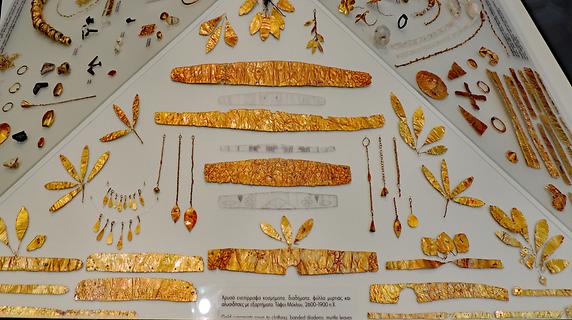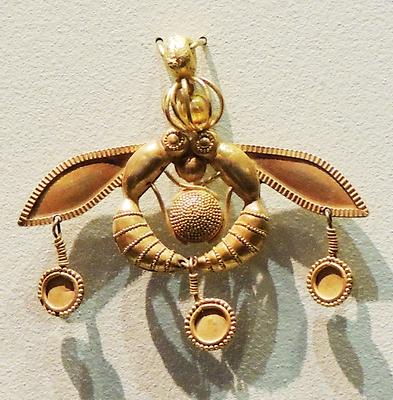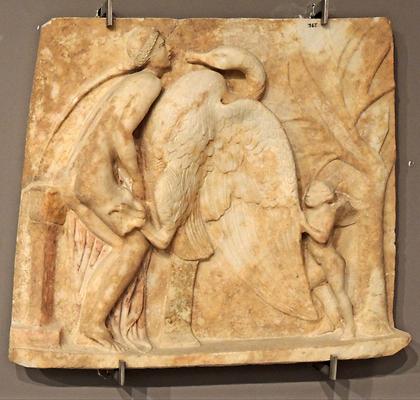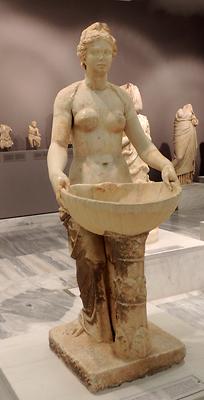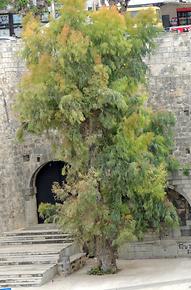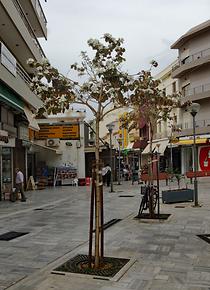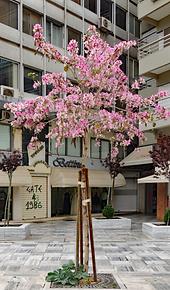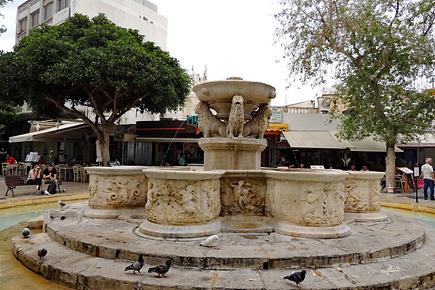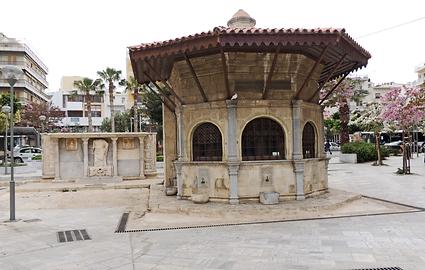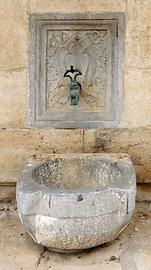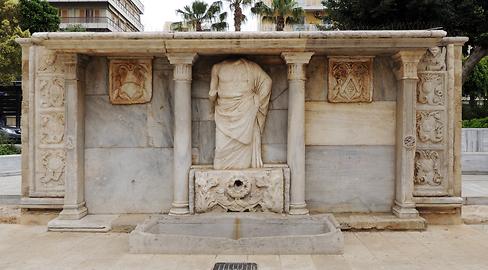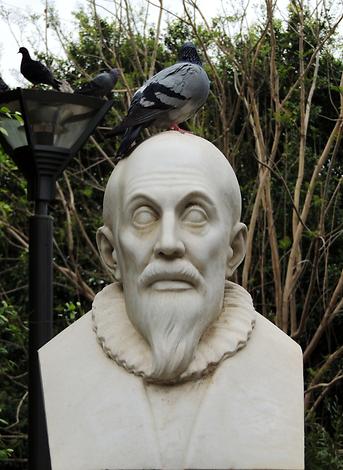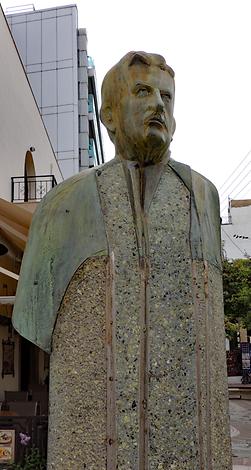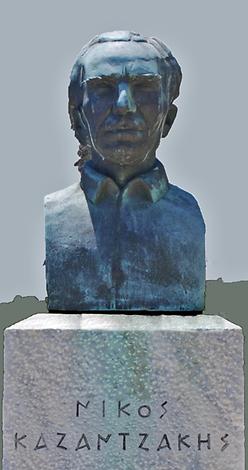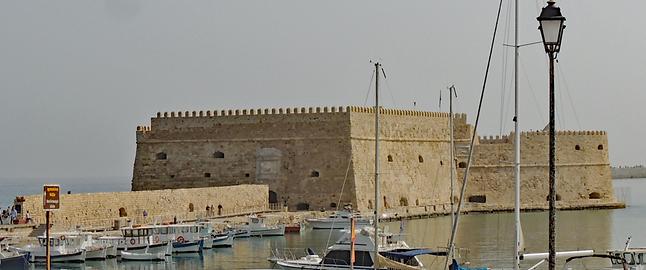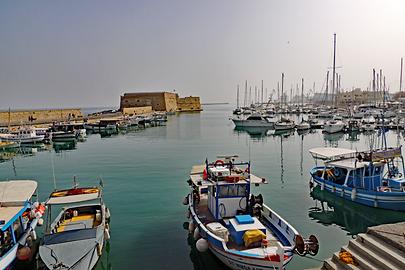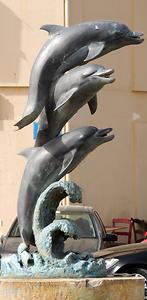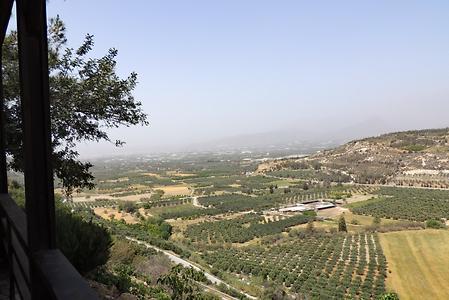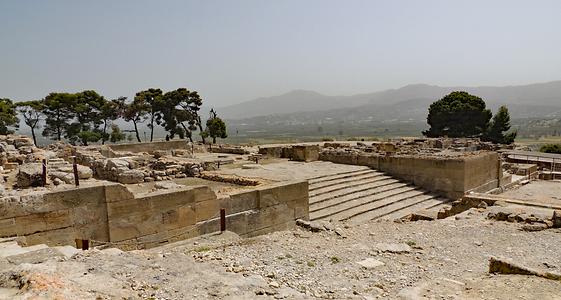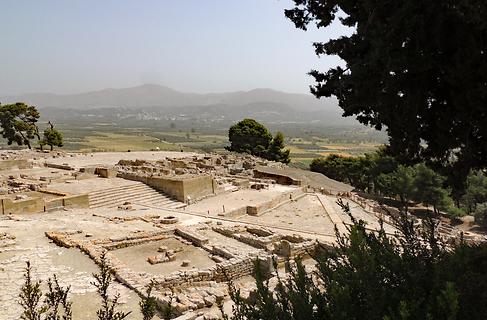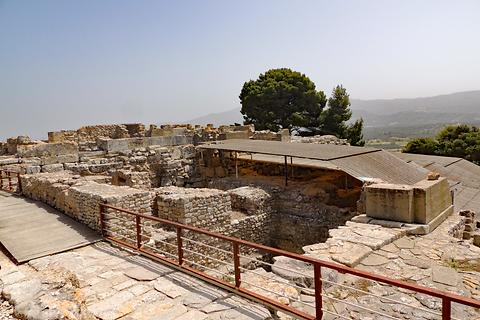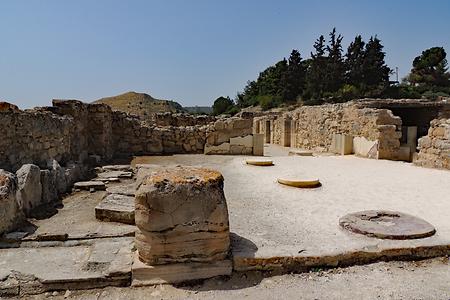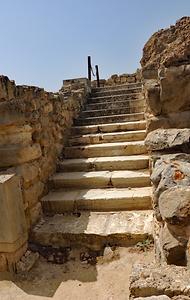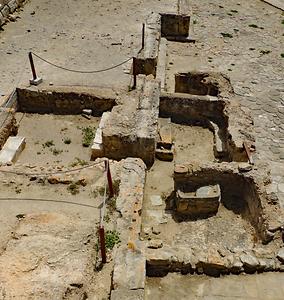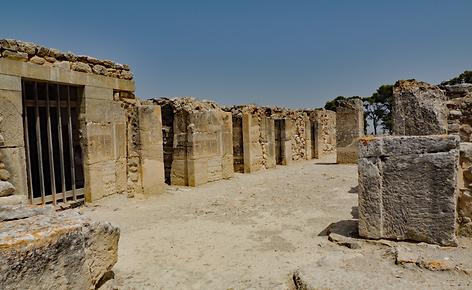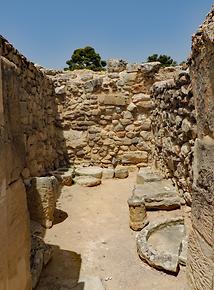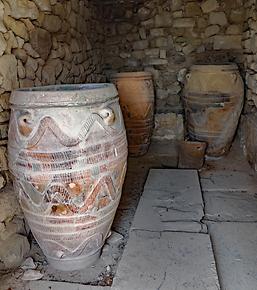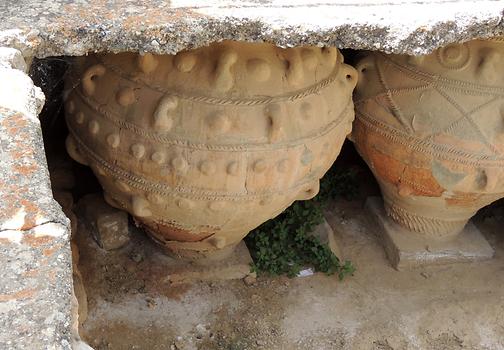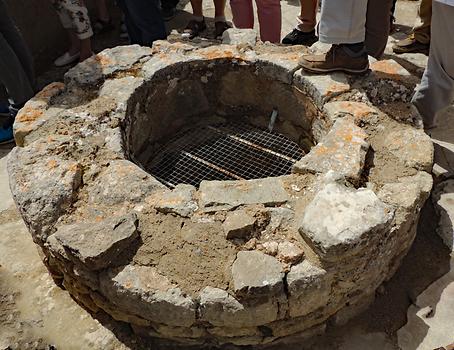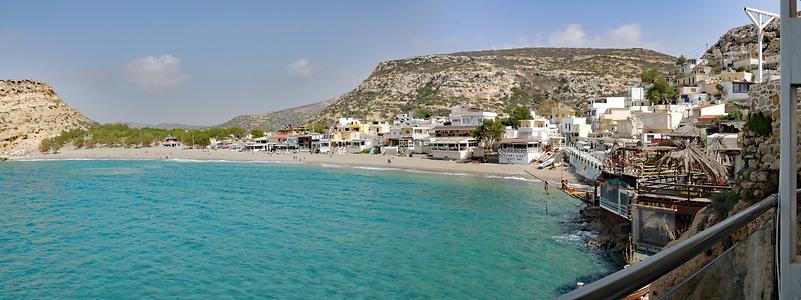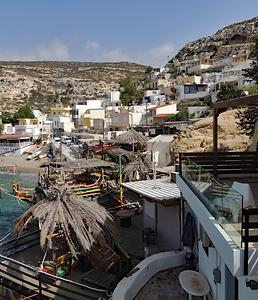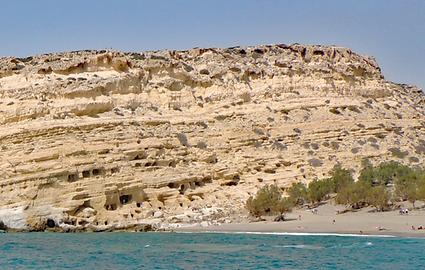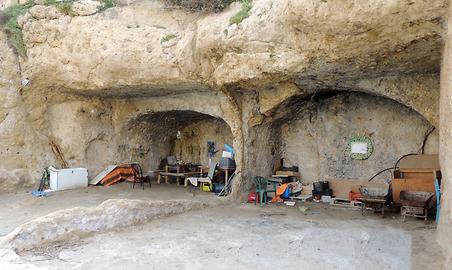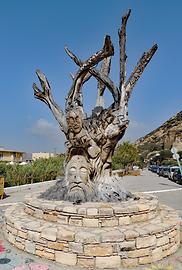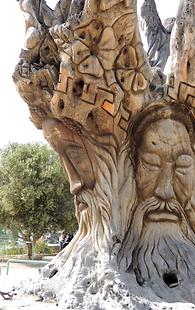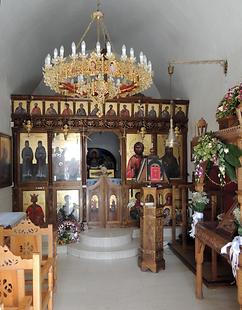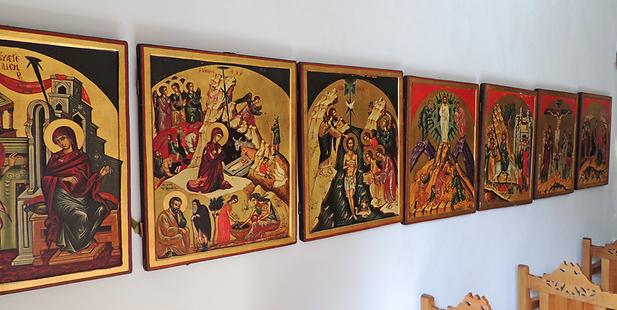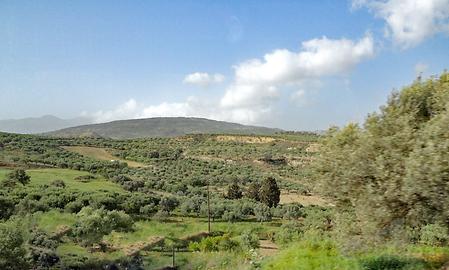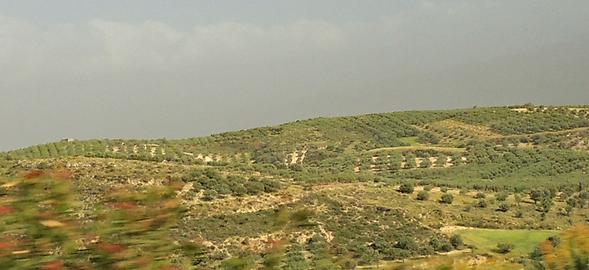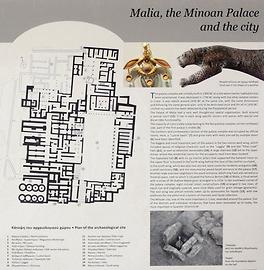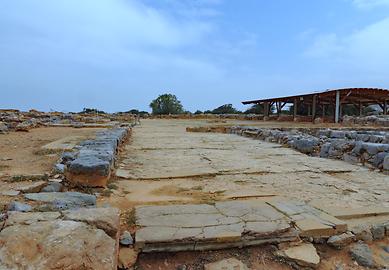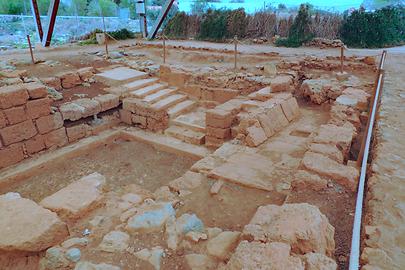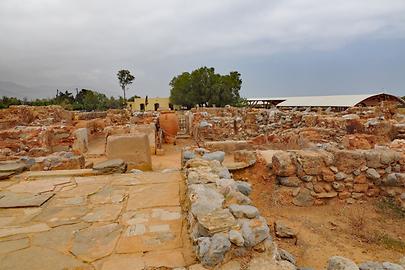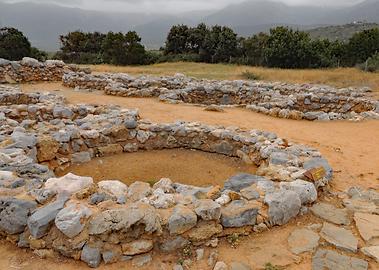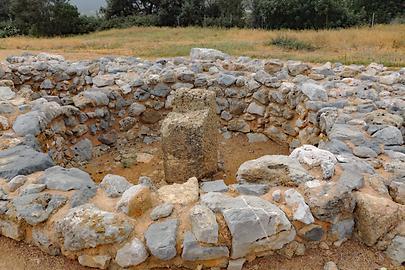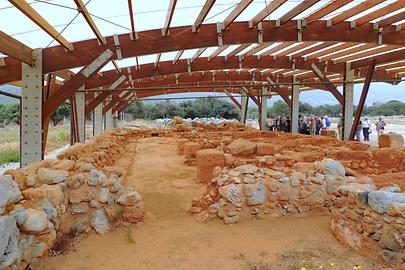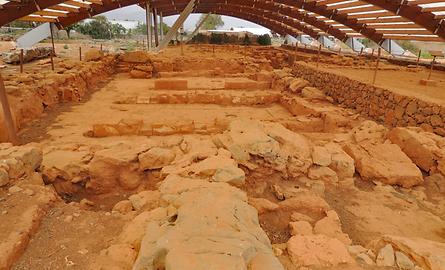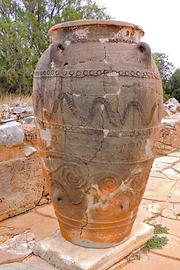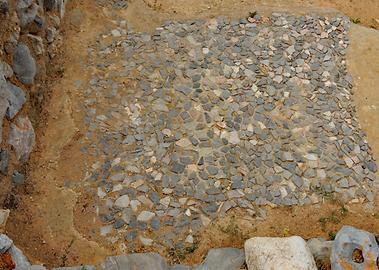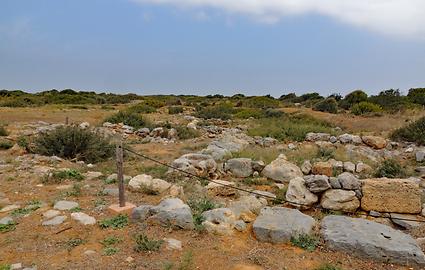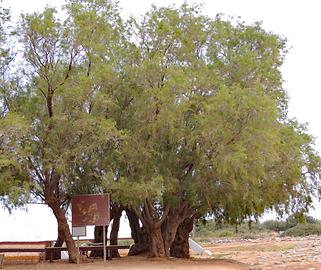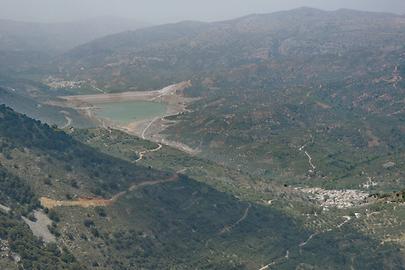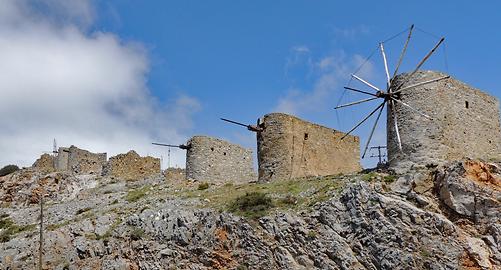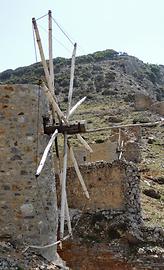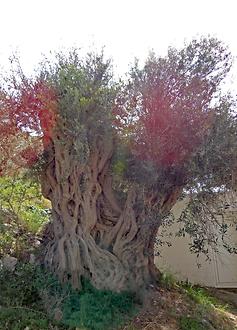Crete in pictures from a seven-day bus- tour#
by
Crete Greece, Crete has an area of 8261 square kilometers, making it the largest Greek island. It has a population of 623,000. North of the island is the sea of Crete, south is the Lybian sea. Crete is quite mountainous. A chain of mountains stretches all the way from East to West reaching an elevation of up to 2.500 m.
Table of Contents
- Crete in pictures from a seven-day bus- tour
- Monastery Arkadi
- Archaeological Museum Elefthera
- Rethymnon
- Monastery Agia Triada
- Burial monument of Eleftherios Venizelos
- Chania
- Antique Aptera
- Monastery of Saint Johannes Theologos
- The fortifications of Koules and Itzedin
- Kournas Lake
- Monastery Agios Georgios Selinari
- Agios Nikolaos
- Island Spinalonga
- Palace of Knossos
- Archeologiacl museum of Iraklion
- Iraklion city
- Palace of Phaistos
- Matala
- Palace of Malia
- The Lassithi plateau
- Monastery Kera
- Mountain village Krasi
- Sources
Monastery Arkadi#
The monastery is first mentioned in writing in the 14 th century. Its spiritual and culturual importance continued until 1866, when it was destroyed by the Osman army. The monastry was desparately defended for two days. But when it became clear that the resistinace would not be enough everyone in the monastery (fighters, women and children) went into the gun-powder storage room and blew themselves up, together with a good part of the monastery.
Archaeological Museum Elefthera#
The new museum was built next to the old city of Elefthera Elefthera, Crete . Exhibits range from the early ice to Byzantine times 3000 BCto 1300 A.D.,mainly form the old city of Eleftherna.
Rethymnon#
Rethymnon Rethymnon, greece ist one of the most beautiful cities of Crete with currently some 22.000 inhabitants. Like many places west of Heraklion the old city has quite a bit of oriental flair and is still largely intact. The nice venitian harbour is an obvious place to start some for strolling around, with many coffe houses and restaurants inviting visitors.

Photo: © Werner Gobiet, 13.4.2018
Monastery Agia Triada#
The monastery is situated on the peninsula Akotiri Akotiri, Crete . It is the largest monastery on Crete. It was founded by the brothers Tzangarola in the 16 th century. The monastery is quite active also economically, producing bio-olive oil and bio-wine of highest quality. Those and other products can be purchased in the monastery's shop.
Burial monument of Eleftherios Venizelos#
Venizelos came from a simple family in Crete. He was a politician advocating that Crete should join Greece. He became prime minister of Greece in 1910. Crete did indeed join Greece just a few years later in 1913.
Chania#
Chania Chaina, Greece was built on the ruins of the old city of Kydonia. It has a population of 60.000. In the old city motorized traffic is all but forbidden. This part of the city is full of markets, bazars, and boasts a medival harbour, a place for a stroll for both local and tourists in the evenings. Many restaurants and coffeehouses in the harbour area invite you to stay for the rest of the day. Chania and Rethmyon are often said to be the most beautiful cities on Crete.
Antique Aptera#
The old city of Aptera Aptera, Greece was built on a hill fittingly nameds Paleokastro. North of Aptera is the bay of Souda, and in the south the impressive range of Lefka Ori (White mountains). The name Aptera is found in inscriptions of the 13 th and 14 century. A good part of the ongoing excavations is not open to the public.
Monastery of Saint Johannes Theologos#
In Aptera a monastery to honour Saint Johannes Theologos was built, but unfortunaly closed in 1964. However, the church is still in use today.
The fortifications of Koules and Itzedin #
Koules was built by Osmans during the revolution of 1866. Itzedin further down in the village of Kalami Kalami, Greece was established in 1872 both for accomodating soldiers and as hospital. After liberation from the Turks it was use as prison and a place to execute political prisoners.
Kournas Lake#
This is the most southernmost fresh-water lake Kournas lake, Greece of Europe. The water comes form the white mountains mentioned earlier.
Monastery Agios Georgios Selinari#
The Monastery Agios Georgios Selinari is in a beautiful valley. Selinari means "wild gorge" in which the monastery is located. Unfortunateyl onyl a small part of the monastera is open to visitors.
Agios Nikolaos#
Agios Nikolaos Agios Nikolaos is one of the bestknown tourists places with very good beaches. The city has a population of some 10.000 and again is in the competition for the title "most beautiful city of Crete". The city is located at the place of the antique village Lato pros Kamara. Voulismeni-Lake is in the cener of the city, connected to the open sea with a short channel.
Island Spinalonga#
The Island Spinalonga Spinalonga, Crete has a complex history. It is important since it controls the entrance to tje gulf of Elounda. Hence the island was fortified to protect the harbour Olous already in ancient times. The Venetians built a strong fortification on its ruins in the 16 tht century. However, Osmans conquered the fortress in 1715. Some 600 Christians living on the island were deported, and Muslims started to live there. In 1881 their number was around 1.100. After the independence of Crete the islanda was used as a Leper colony (from 1903 to 1957), forcing all other inhabitatns to leave. The island can be vitited as part of a guided tour today.
Palace of Knossos#
Knossos Knossos, Crete is the largest Bronze Age archaeological site on Crete and has been called Europe's oldest city. The ancient city was once the center of the Minoan culture and is particulalry known because of the palace of Knossos. In this arae of a neolithic settlement a large, impressive and rich palace was built btween 2.100 adn 1.800 BCIt was destroyed by a massive earthquake around 1.700 B.C., with addititonal damage done by a second quake around 1.400 BCSir Arthur Evans, who unearthed the palace of Knossos in modern times, estimated that about 7.000 BC a Neolithic people arrived at the hill, probably from overseas by boat, and placed the first of a succession of villages.
Crete had a number of similar palaces (see below). However, at the hight of Cretan power around 1,450 BC the palaces at Mallia, Phaestus and Zakro were destroyed along with smaller settlements elsewhere. Only Knossos remained and it survived till about 1370. At the time of its destruction, it was occupied by Greeks whose presence is suggested by a new emphasis on weapons and warfare in both art and burial. The Mycenaean-style chamber tombs had been adopted and there was a mainland influence on pottery style. Confirmation came from writing after Michael Ventris deciphered the Linear B tablets and showed them to be written in an early form of Greek which was quite unlike the earlier Linear A. Sir Arthur Evans found the Linear B tablets at Knossos and, although the writing was different from the Linear A ones at Phaestus and elsewhere, he thought they were a development of the first and so called them Linear B.
Despite speculation that Knossos was destroyed by the volcanic eruption on Santorini, it is generally accepted that the cause was human violence following an invasion of Crete by Greeks from the Argolid, most probably Mycenaean. Knossos was still prosperous at the time of its destruction in 1.370 with trade and art continuing to thrive. Reasons for its destruction are speculative but a likely one is that the Mycenaeans, now prospering on the mainland, decided to remove a rival power.
It is sometimes believed that Knossos palace contained the famous labyrinth of Minotaur, a monster that was finally killed by Theseus who used Ariandne's advice to escape from the maze using a thread attached to the entrance that he would use to find the way out. However, this early idea by Sir Arthur Evans has never been verified.
More on Knossos see https://en.wikipedia.org/wiki/Knossos.
Archeologiacl museum of Iraklion#
The Archeologiacl museum of Iraklion houses some particularly spectacular archeological finds including items found in Knossos and Phaistos, like a small sculpture of the snake godesss.
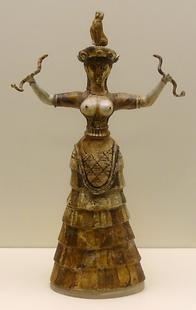
Photo: Name. Aus: Wikicommons, under CC BY 3.0
Iraklion city#
Iraklion (Heraklion) Iraclion, Greece is the capital of Crete. By the official count of 2011 it has a population of 173.000. In Minoian times one of the four harbours of Knossos was quite close to the city. According to myth, Herakles landed here to capture the bull of Crete.
From 824 to 1206 rulers were first Muslims and later Byzantines. Then Venetians took over till 1699. But then Osmans ruled till 1913. After a bloody massacre of Greeks and Christians a kind of autonomay was obtained in 1898. As mentioned before, Crete was united with Greece in 1913. The city was heavily bombarded and damaged in 1941.
Palace of Phaistos#
Phaistos Phaistos, Crete is on a hill overlooking the Messara plane. Italian archeologists have been excavating the palace since around 1900. They are not using colours or concrete to preserve the original as much as possible. The palace was built between 2.000 an 1.700 BC, was destroyed by fire in the 17 th century BC, rebuilt, but evenutally destroyed and abandoned in the 15 century BC.
Matala#
The best known sea resort in the Messara plane is Matala Matala, Crete . Very close to the beach there are historic burial caves, others were used to live in. The origin of the caves is unknown, but it is usually assumed that all caves were used as burial chambers by the Romans. In the 1960-ties Hippies - flower children- were attracted by the caves. During this time a stump of a tree was converted into an elaborate sculpture. The caves are under monument protection today.
Palace of Malia#
The palace of Malia Malia was built in Minoian times around 1.900 BC. Like Knossos it was destroyed by two earthquakes, one aroundd 1.750 BC, the second 1.450 BC. When the remainder of ancient walls was dicovered by the Greek archeologist Iosif Chatzidakis in 1915 excavation started, and has continued since.

Photo: © Werner Gobiet, 17.4.2018
The Lassithi plateau#
The Lassithi plateau Lasithi plateau, Crete at an altitude of about 830 m is some 10 km long and 5-7 km wide. It is surrounded by mountains and an only be reached via two roads, crossing some mountain-passes. The about 20 villages house somes 5.000 people. The plane is is fertile and is used intensly for agriculture.
The old wind wheels that were used to pump water up from the valley to the Lassithi plane are the famous landmarks of the plane. Most pumps are operated by dieselmotors these days. Soem 8.000 suche pumps are still in operation.
The Lassithi plateau is also known for the sacred Psychro Cave Pschro cave, Crete , associated with the Diktaean Cave, one of the putative sites of the birth of Zeus. Other legends put the place of birth of Zeuss in the Idaean Cave on Mount Ida, west and inland of Iraklion.

Foto: © Werner Gobiet, 17.4.2018

Foto: © Werner Gobiet, 17.4.2018

Foto: © Werner Gobiet, 17.4.2018

Foto: © Werner Gobiet, 17.4.2018

Foto: © Werner Gobiet, 17.4.2018

Foto: © Werner Gobiet, 17.4.2018
Monastery Kera#
The monastery of the mistress (Kera) Kardiotissa is dedicated to th god mother. It is an old nunnery that was already mentionedn in 1333, since teh monastery otainedd an icon capable of performing mircles htat year. Three nuns are keepiung the monastery in shape today: it is still a much liekd palce for pilgriamges.

Photo: © Werner Gobiet, 17.4.2018

Photo: © Werner Gobiet, 17.4.2018

Photo: © Werner Gobiet, 17.4.2018

Photo: © Werner Gobiet, 17.4.2018

Photo: © Werner Gobiet, 17.4.2018

Photo: © Werner Gobiet, 17.4.2018

Photo: © Werner Gobiet, 17.4.2018

Photo: © Werner Gobiet, 17.4.2018

Photo: © Werner Gobiet, 17.4.2018

Photo: © Werner Gobiet, 17.4.2018

Photo: © Werner Gobiet, 17.4.2018

Photo: © Werner Gobiet, 17.4.2018
Mountain village Krasi#
The mountain village Krasi Krsi, Crete is famous for its gigantic 14,6 m high platane tree.

Photo: © Werner Gobiet, 17.4.2018

Photo: © Werner Gobiet, 17.4.2018

Photo: © Werner Gobiet, 17.4.2018

Photo: © Werner Gobiet, 17.4.2018

Photo: © Werner Gobiet, 17.4.2018
Sources#
- Local guide-books
- https://en.wikipedia.org/wiki/Crete
